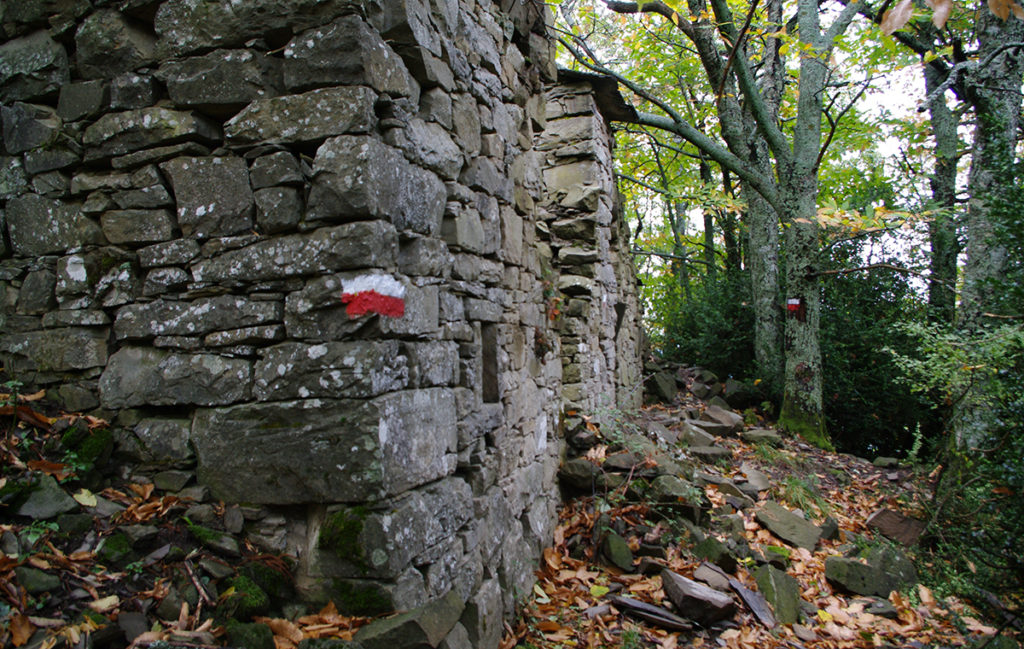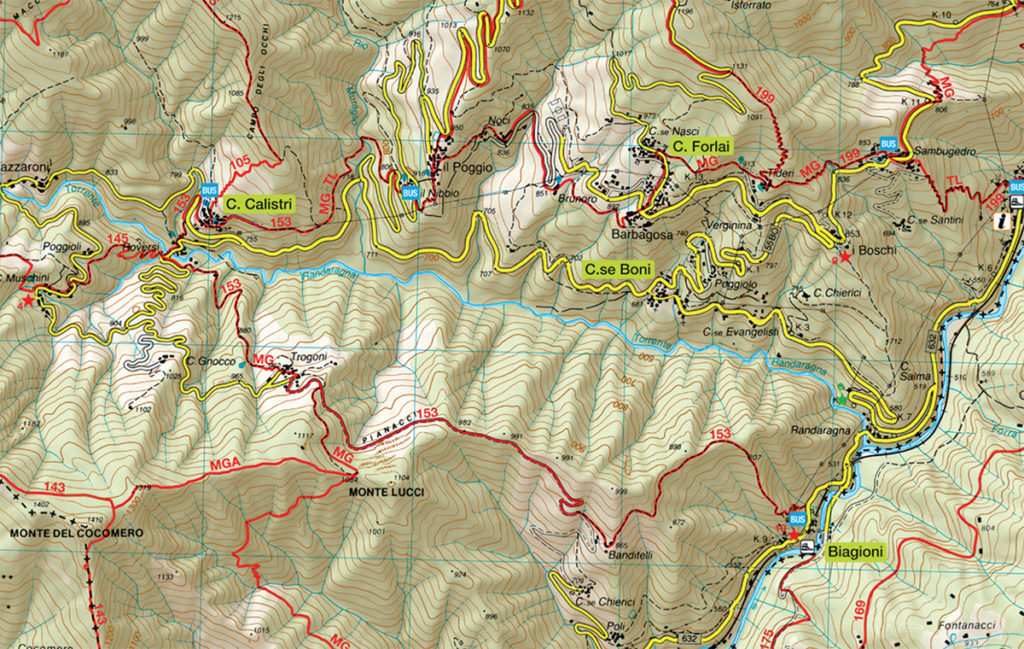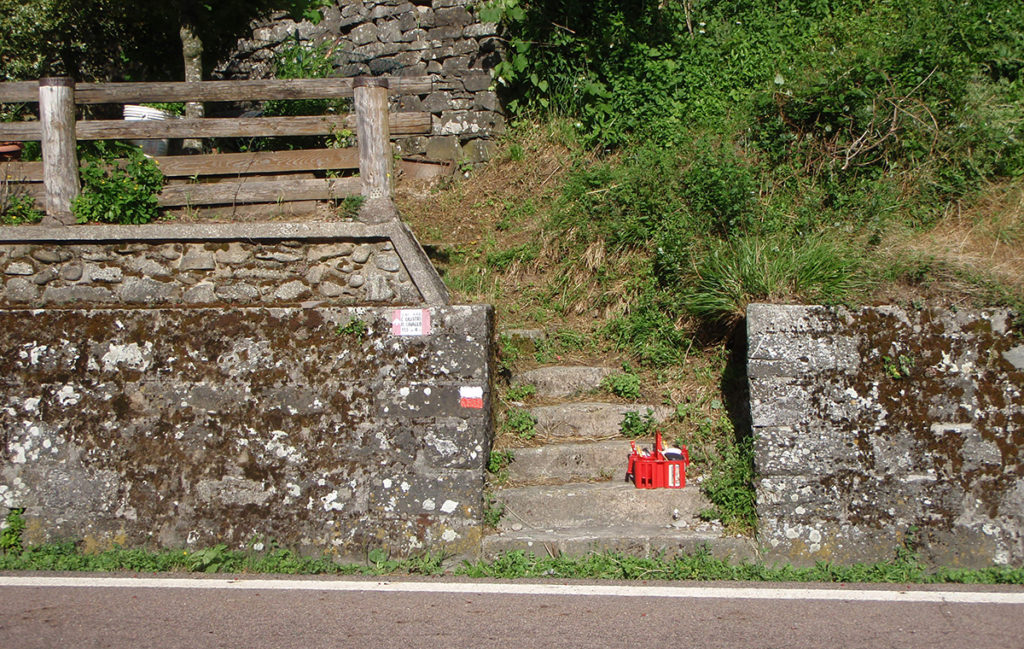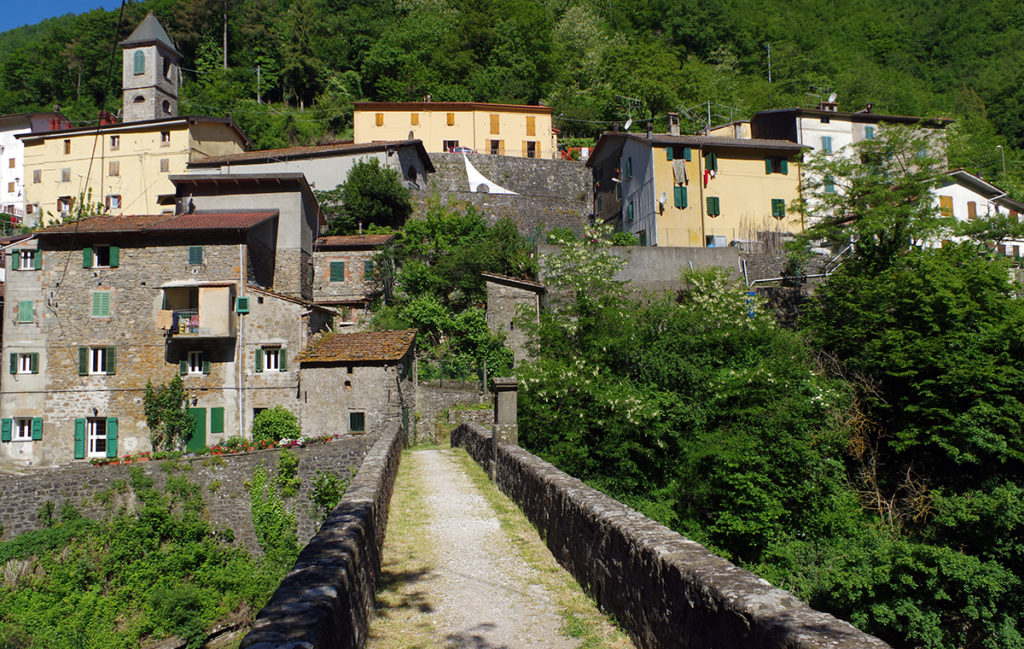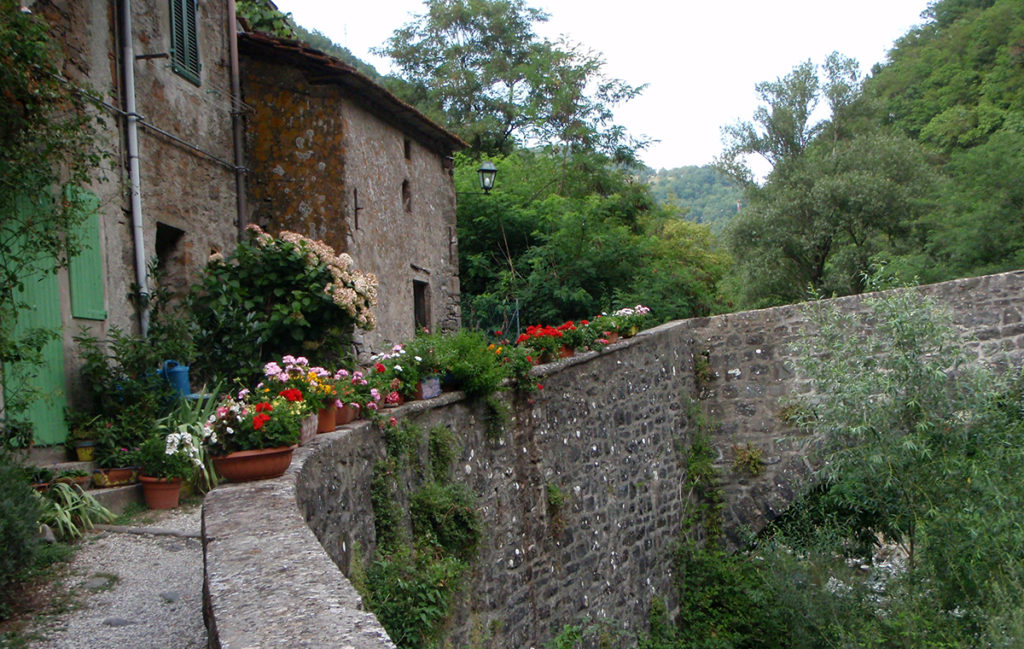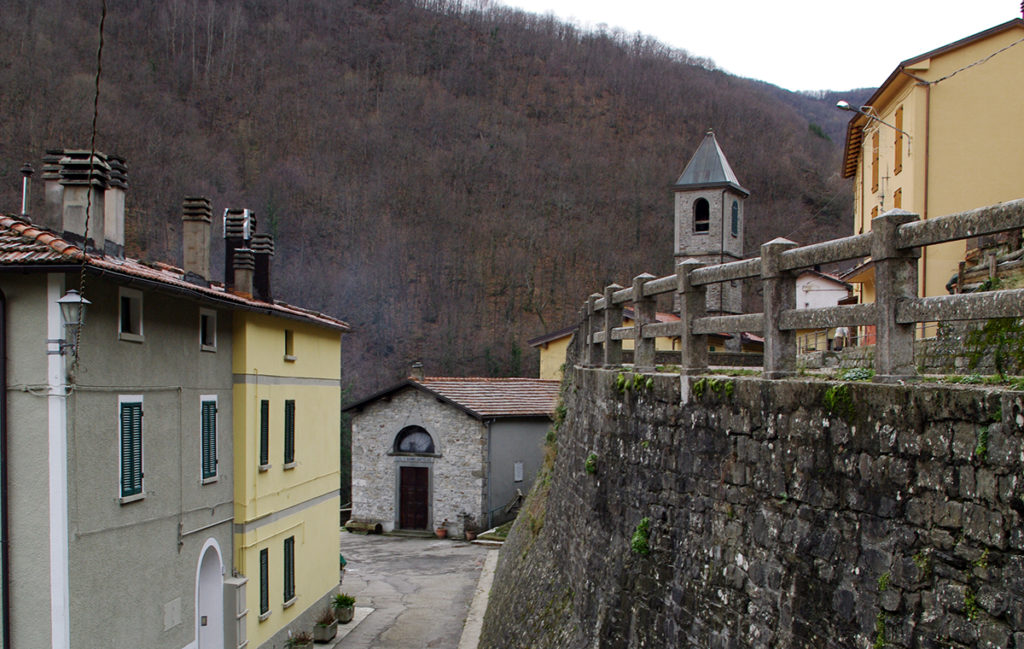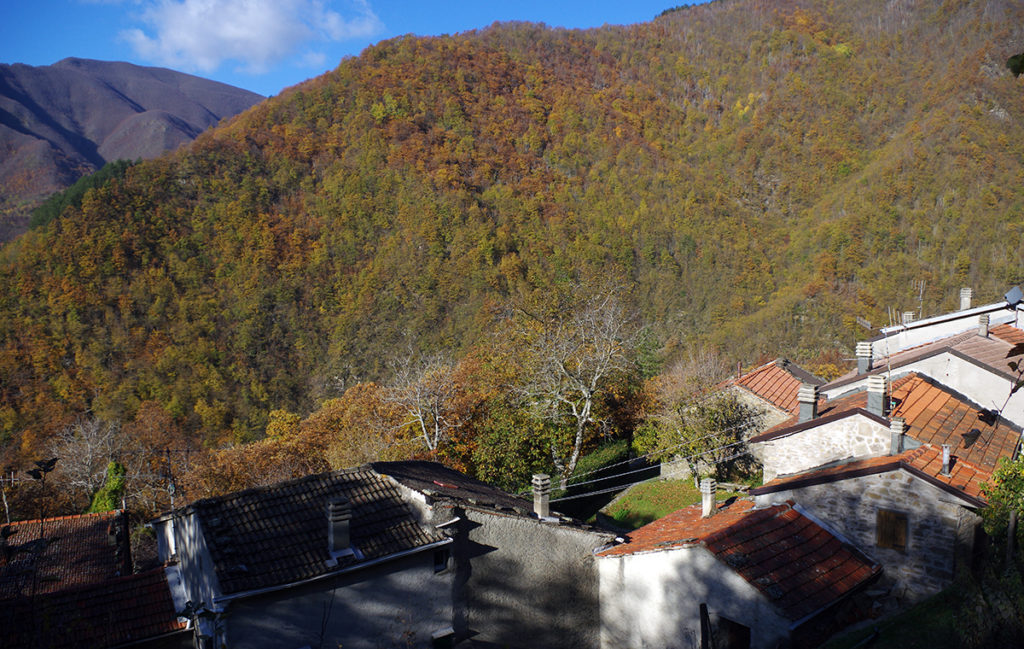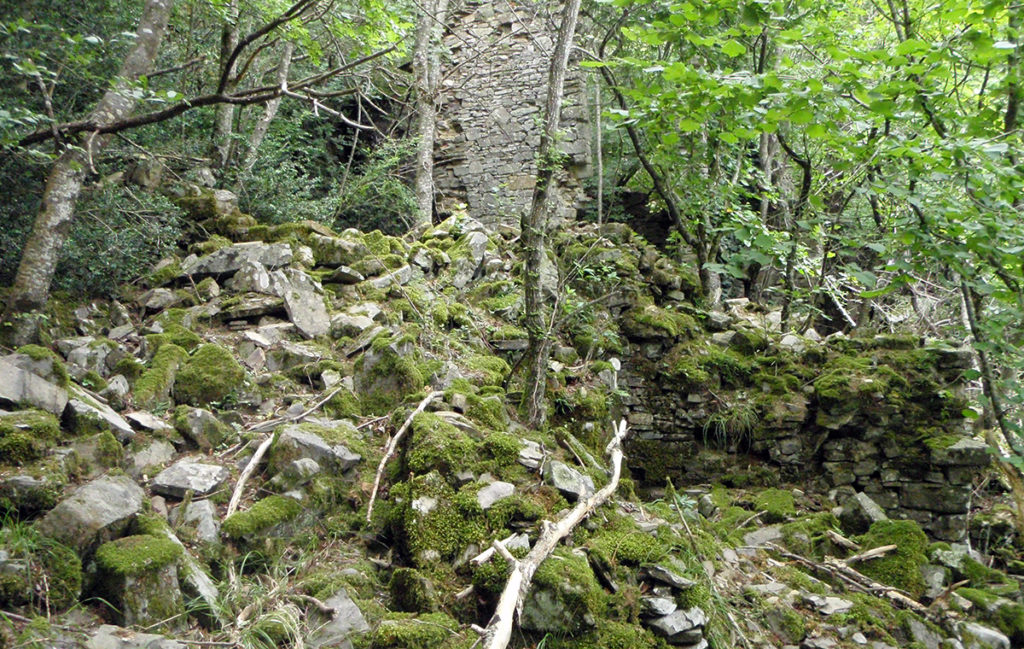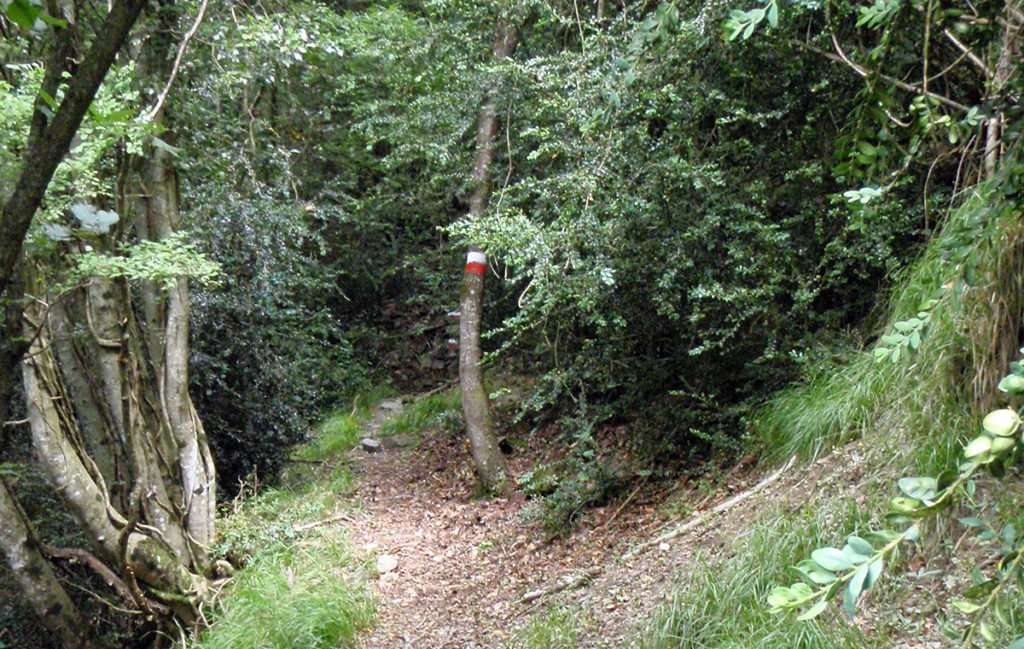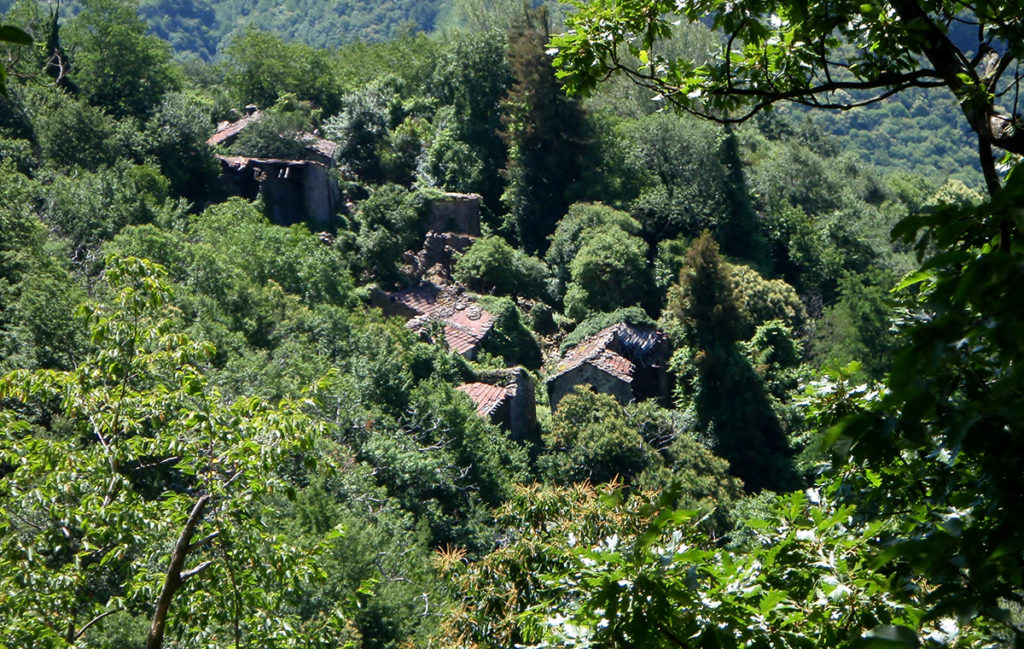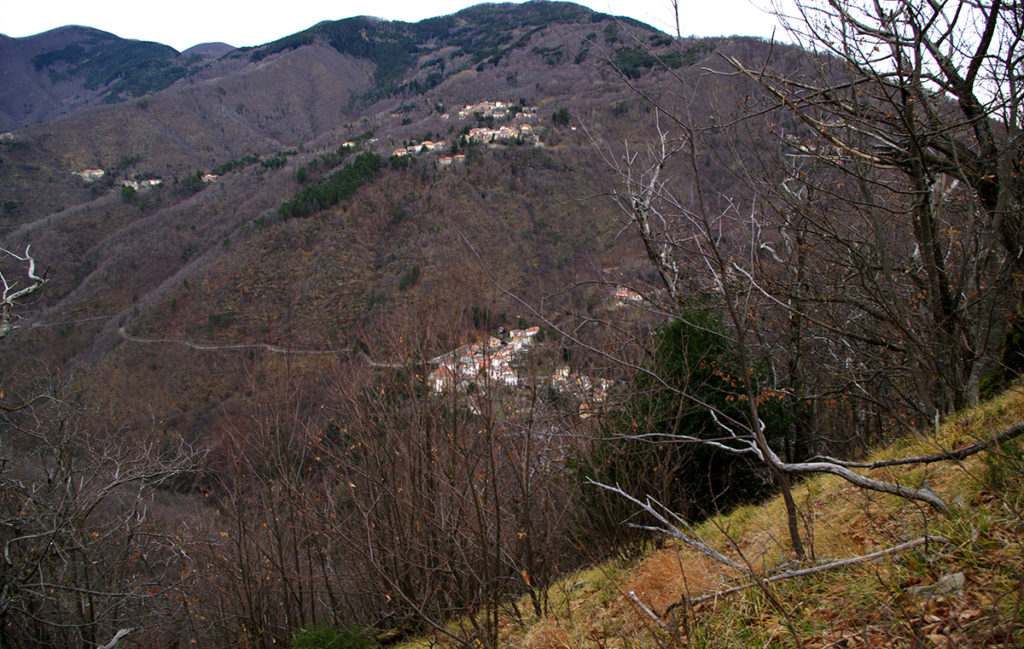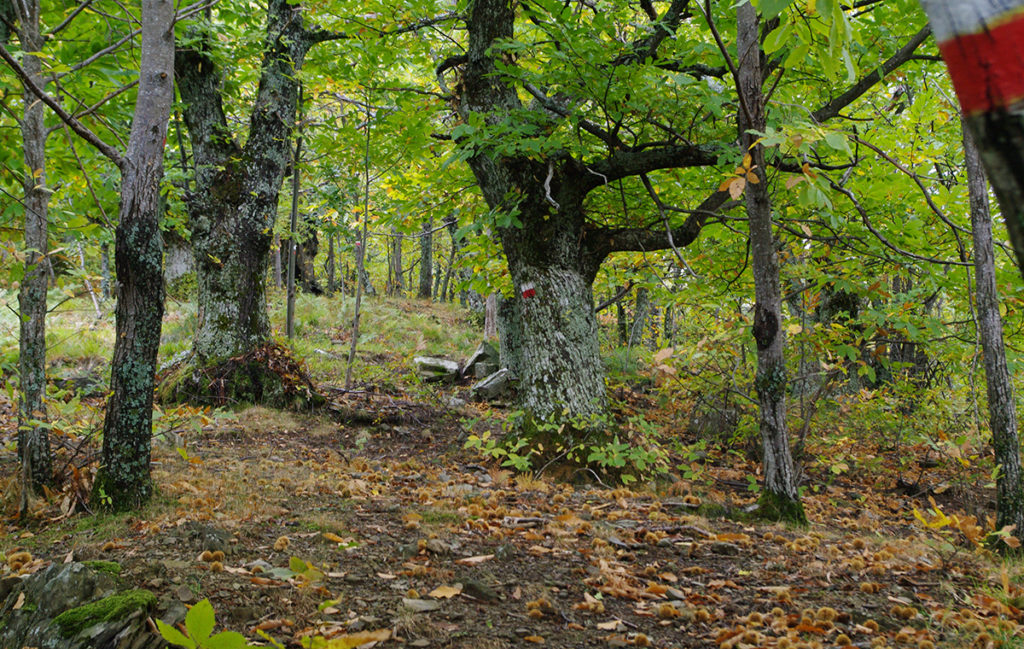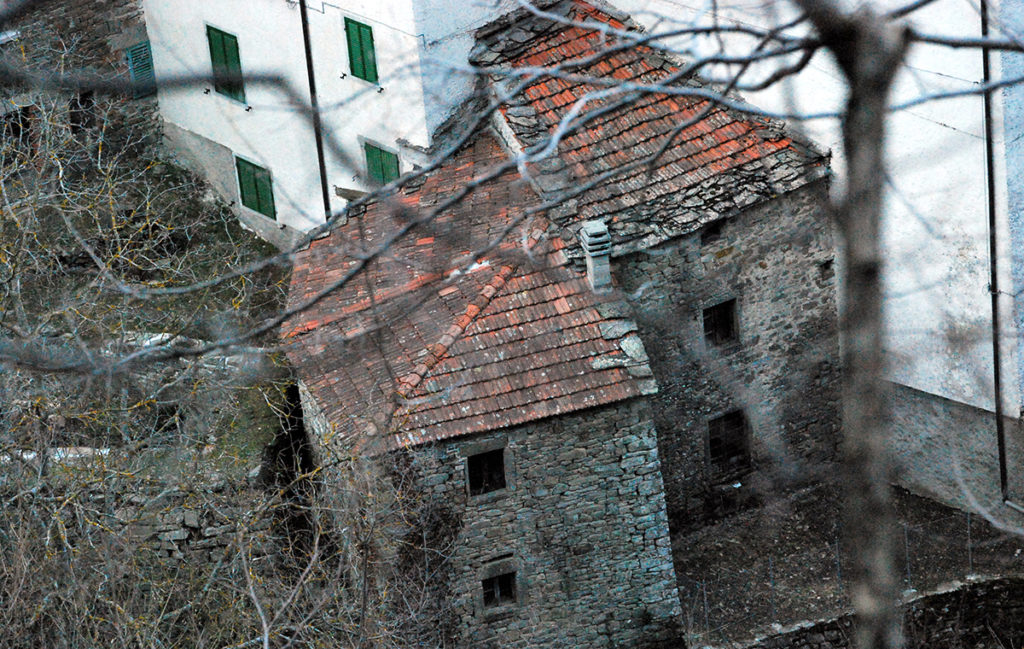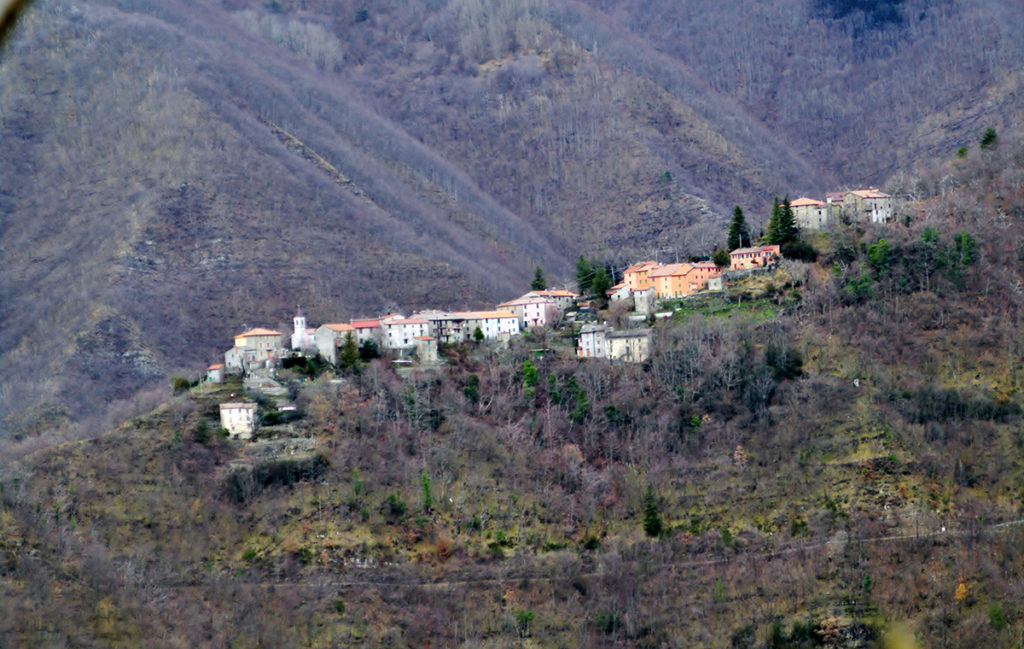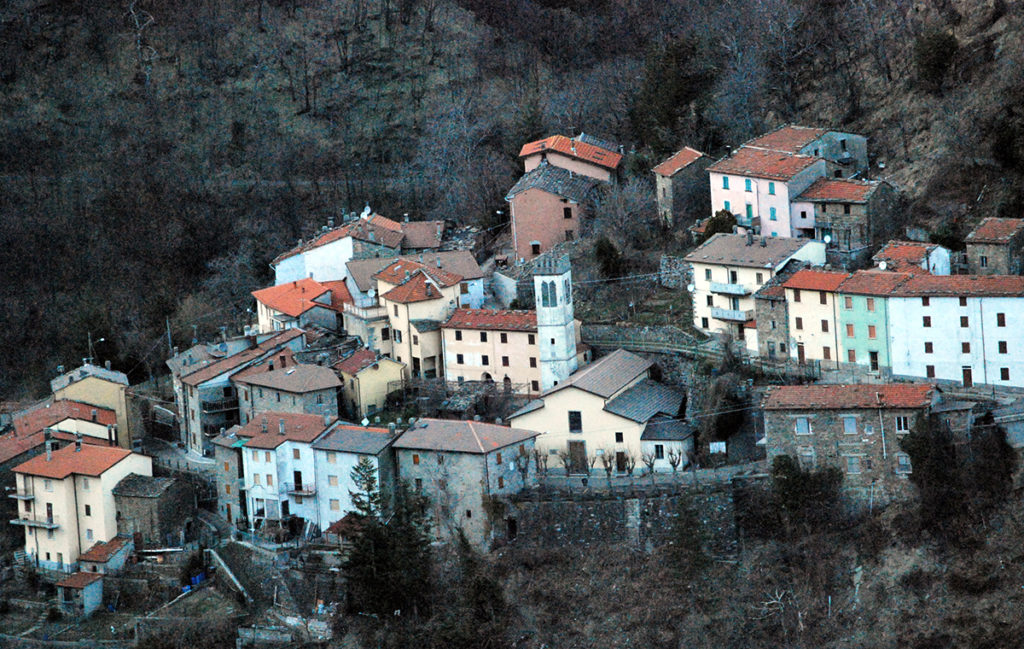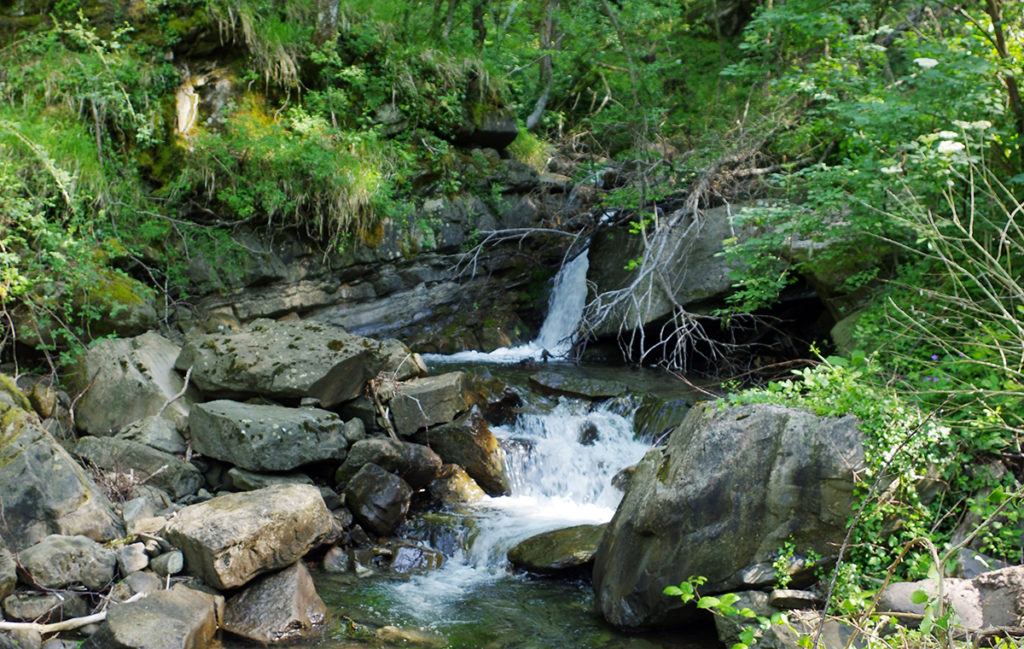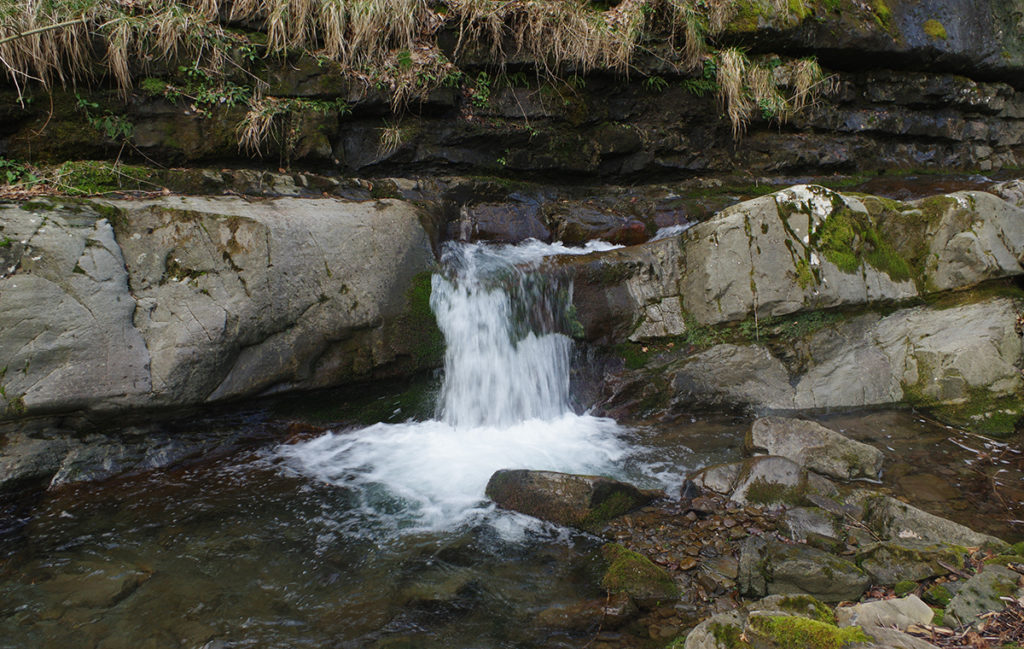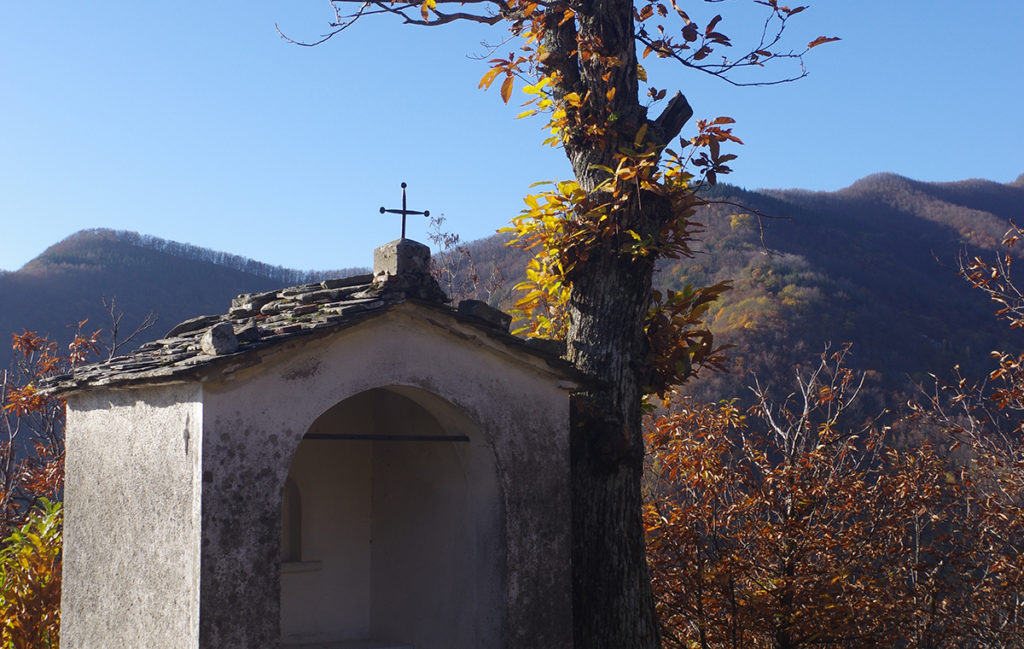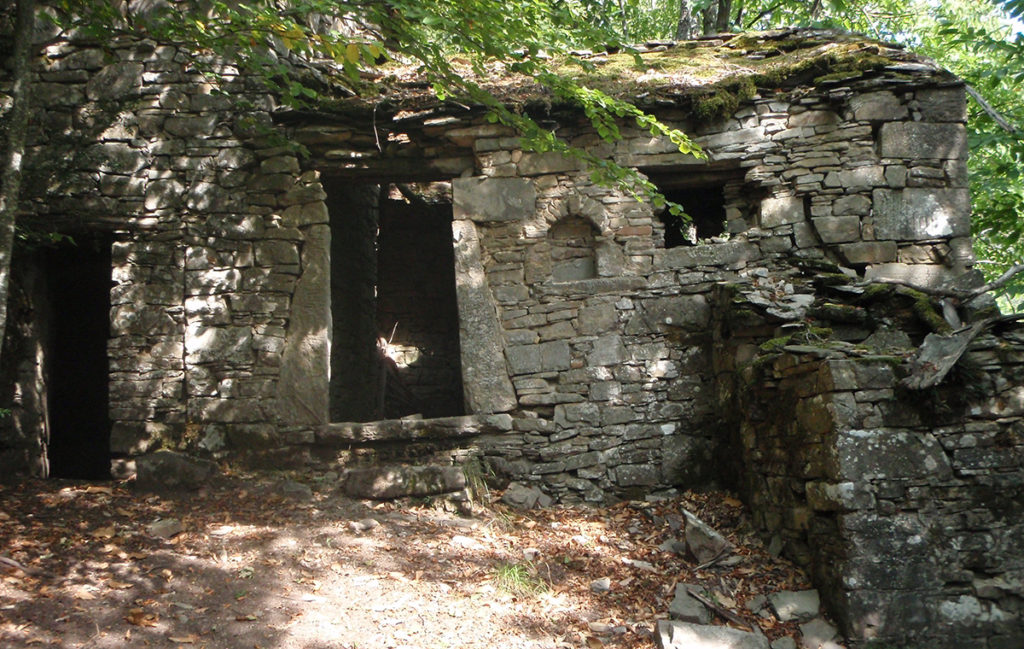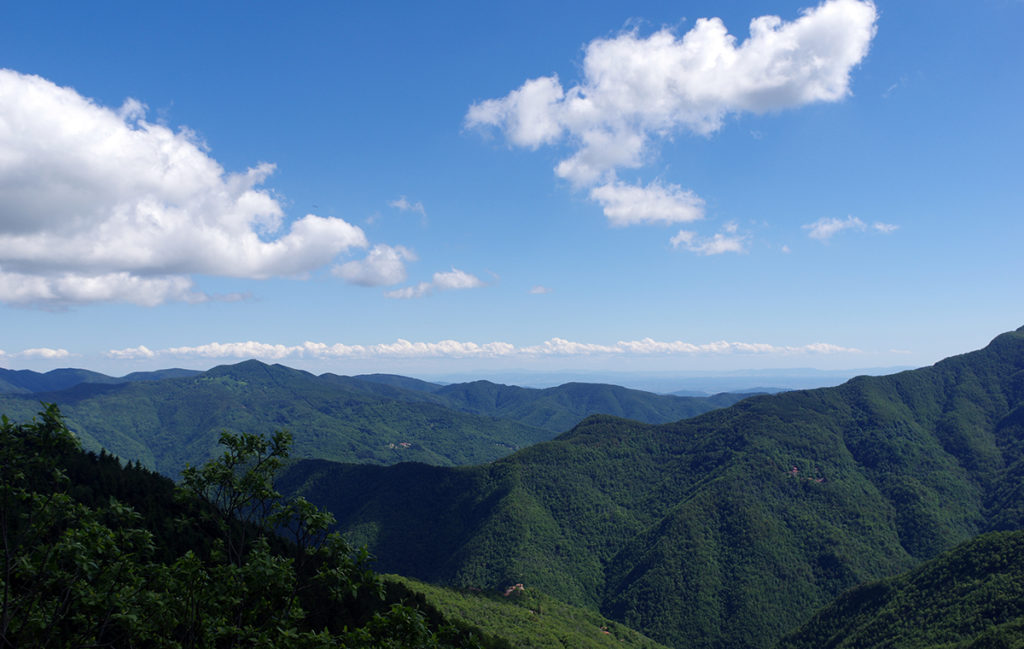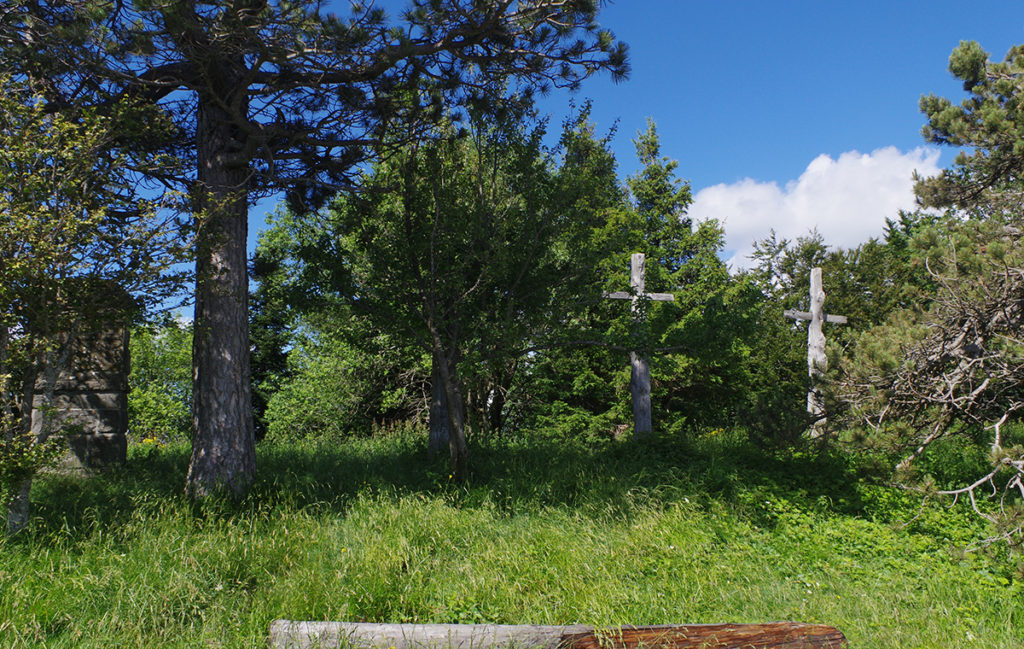© photo Emilio Gadaleta
DESCRIPTION
- Walking distance : 5 hours 45 minutes
- Difficulty : Low
- Elevation : 1300 meters
From Biagioni train station you go up the provincial road where you start the four-steps path, near the proloco, passing by the remains of Case Buffe, and continuing to Casa Banditelli, abandoned since years.
Always follow the trek C.A.I. 153, which in this section follows a forest road, you can admire the beautiful panorama of the entire Randaragna valley.
Once in Trogoni, inhabited only during the summer season, you descend from the ancient Mulattiera di Granaglione, meeting secular chestnut trees. Case Roversi has an old bridge over one of the many branches of the rio and the mill of Marco, now in disuse.
From Casa Roversi you start climbing the left side of the Randaragna valley, towards Casa Calistri.
In Casa Calistri there is the church of San Pellegrino, from which you can enjoy a beautiful panorama of the valley. As you head towards the cemetery, you meet the bridge over the Rio Muraglio, leading you to Nibbio. Here you can find some carved stones on the facades of the houses.
Crossing the asphalt road, leading to Montecavallo, get on the trek C.A.I. 153 again and arrive to Poggio dei Boschi and visit the Oratorio of San Michele Arcangelo. Continuing on the trek passing by Casa Giobbe, you will reach Casa Burchio,.
At Casa Burchio you can continue along the trek C.A.I. 153 on the asphalt to the Montecavallo Mountain Hut, passing through the Tre Croci.
Alternatively, take C.A.I. 153A, which allows you to avoid 3kms on asphalt, the trek climbs by cutting off the four bends of the paved road and allows you to see three Casette along the way, with presence of animal shelter and well, quite unusual. You reach the Rifugio di Monte Cavallo on the opposite side of the trek C.A.I. 153.
USEFUL TIPS
Like most hiking treks in Granaglione it is advisable to wear boots, long pants and wind jackets.
Stay safe with the GeoResQ app: this GPS based tracking service is run by the National Alpine and Speleological Rescue Organisation (CNSAS) and recommended by the Italian Alpine Club (CAI).

